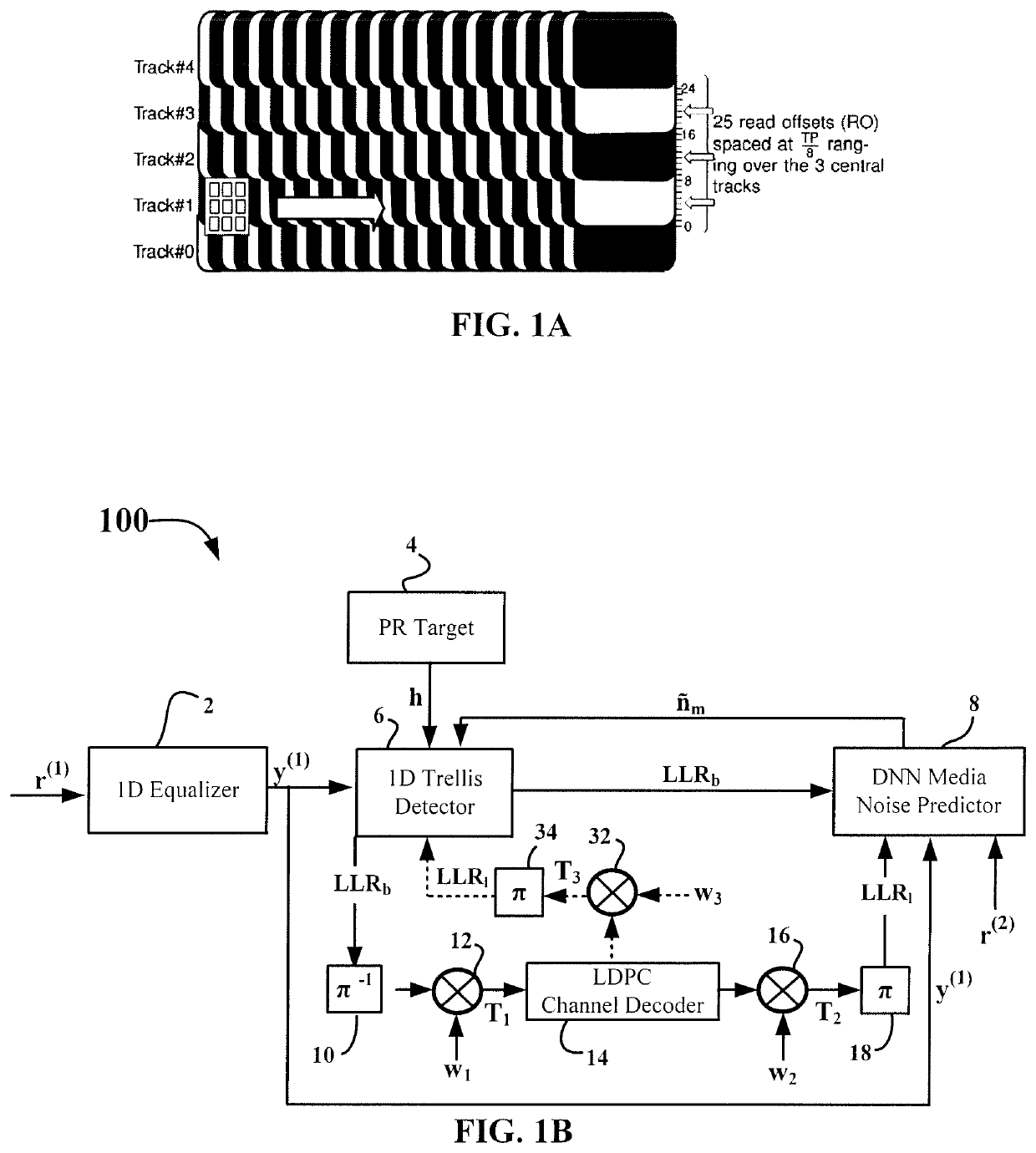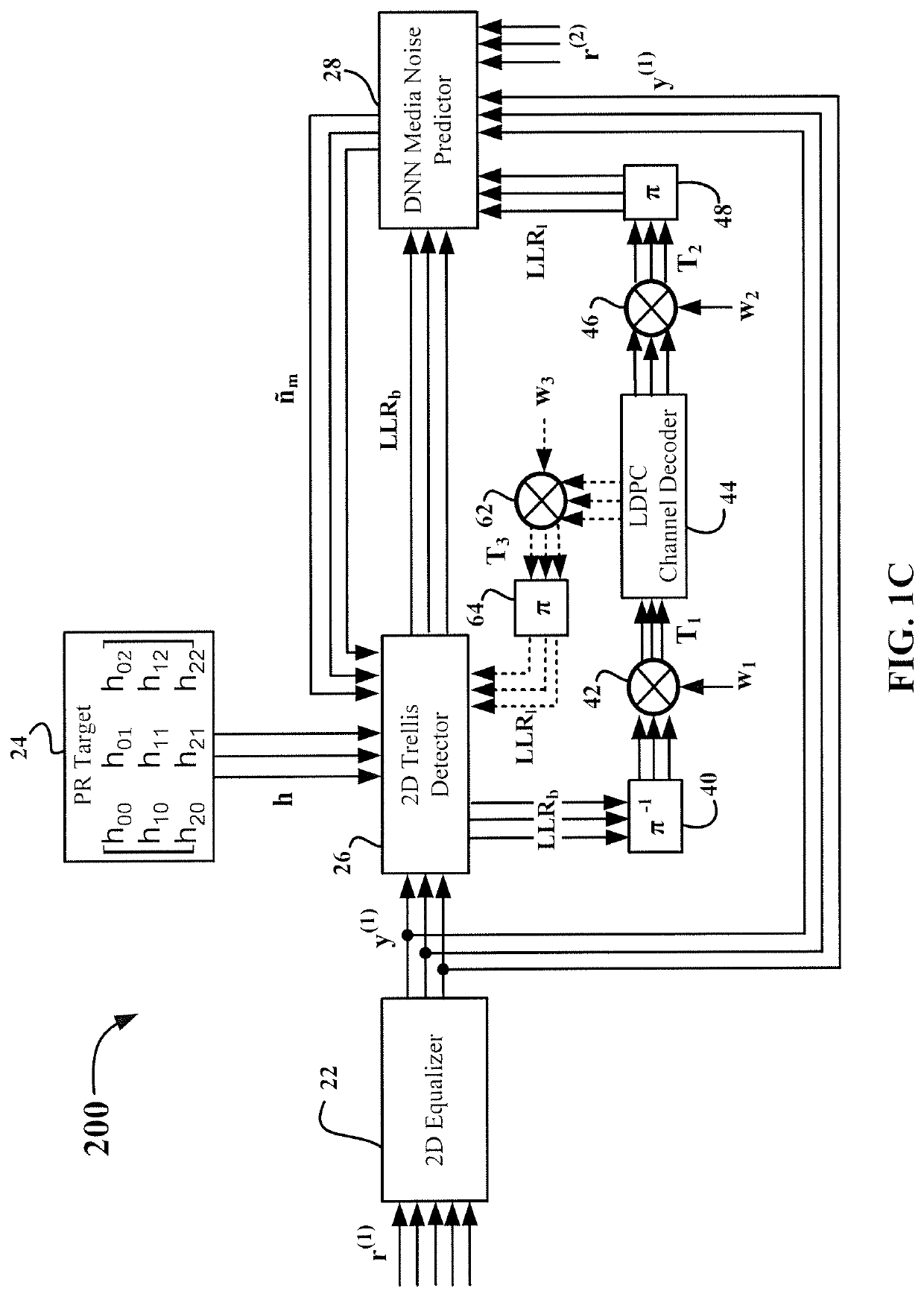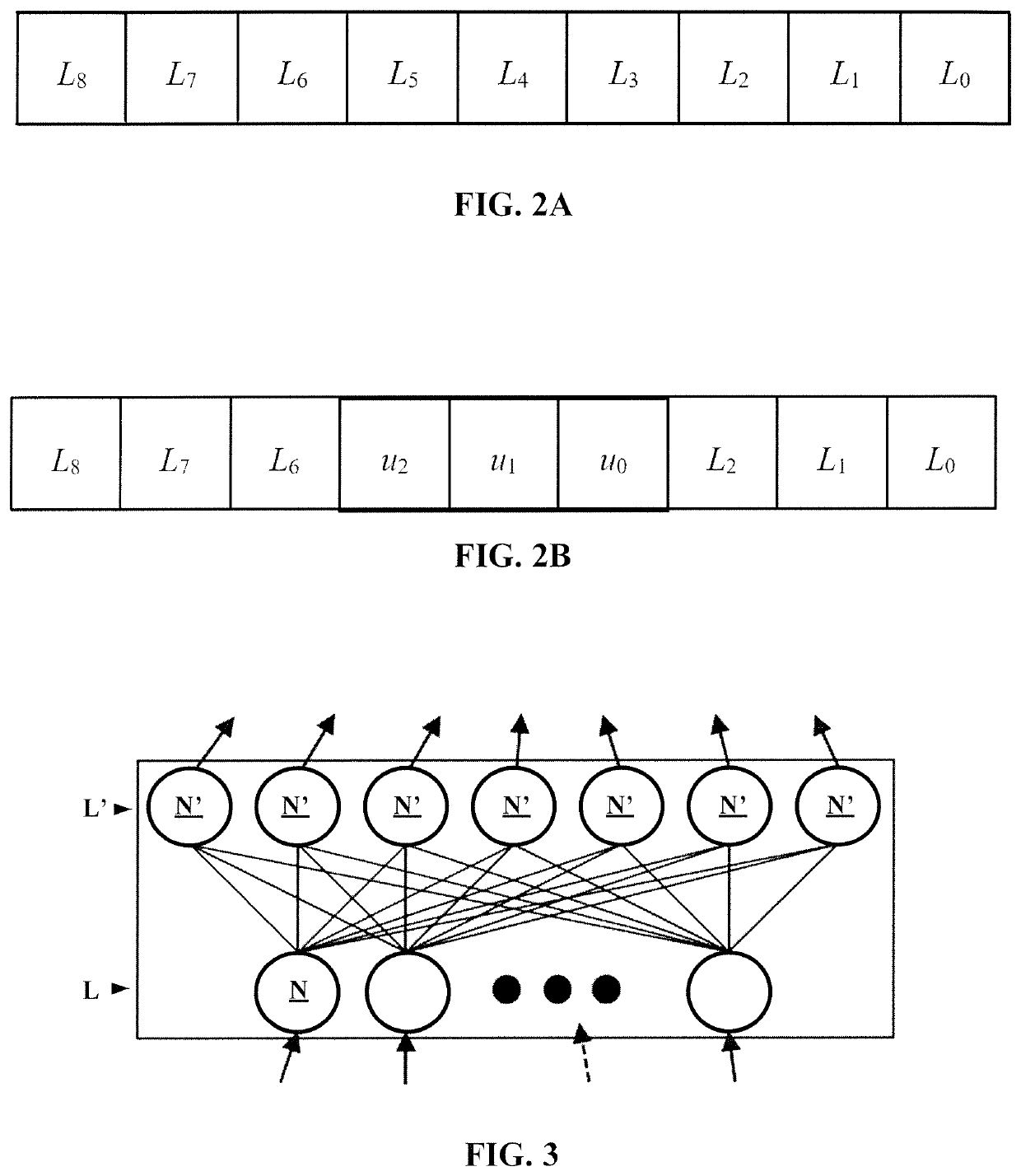Deep neural network a posteriori probability detectors and media noise predictors for one-and two-dimensional magnetic recording
- Summary
- Abstract
- Description
- Claims
- Application Information
AI Technical Summary
Benefits of technology
Problems solved by technology
Method used
Image
Examples
example
[0105]Another example of the embodiment herein is a DNN based a posteriori probability (APP) detection system to be used as a TDMR detection system. FIG. 7 shows a block diagram representation of the DNN based APP detection system referenced by numeral 700. The system input includes of a three-track GFP readings r. Table 4 below shows the best fit normalized 3×3 ISI convolutional masks for two GFP data sets generated to carry out simulations for this example. These ISI masks are estimates of the 2D channel response used to simulate these two data sets, and are estimated using least squares method. For GFP data set #1, the three-track readings have raw BERs of roughly 18.54%, 18.53% and 18.33%, under a hard decision with threshold 0. For GFP data set #2, the raw BERs are 16.38%, 16.41% and 16.32%.
TABLE 4Normalized 3 × 3 convolutional maskfor estimating 2D-ISIGFP data set #1GFP data set #20.11630.27250.04620.09670.17420.05980.30871.00000.52640.38571.00000.55960.09590.41940.36280.06370...
PUM
 Login to View More
Login to View More Abstract
Description
Claims
Application Information
 Login to View More
Login to View More - R&D
- Intellectual Property
- Life Sciences
- Materials
- Tech Scout
- Unparalleled Data Quality
- Higher Quality Content
- 60% Fewer Hallucinations
Browse by: Latest US Patents, China's latest patents, Technical Efficacy Thesaurus, Application Domain, Technology Topic, Popular Technical Reports.
© 2025 PatSnap. All rights reserved.Legal|Privacy policy|Modern Slavery Act Transparency Statement|Sitemap|About US| Contact US: help@patsnap.com



